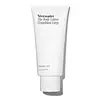What's inside
What's inside
 Key Ingredients
Key Ingredients

 Benefits
Benefits

 Concerns
Concerns

 Ingredients Side-by-side
Ingredients Side-by-side

Water
Skin ConditioningCocamidopropyl Hydroxysultaine
CleansingAloe Barbadensis Leaf Juice
Skin ConditioningSodium Laurylglucosides Hydroxypropylsulfonate
CleansingDisodium Cocoyl Glutamate
CleansingSodium Chloride
MaskingSodium Cocoyl Isethionate
CleansingCalendula Officinalis Flower Extract
MaskingChamomilla Recutita Flower Extract
MaskingCamellia Sinensis Leaf Extract
AntimicrobialLavandula Hybrida Oil
EmollientLavandula Angustifolia Oil
MaskingGlycerin
HumectantCaprylyl Glycol
EmollientPanthenol
Skin ConditioningGuar Hydroxypropyltrimonium Chloride
Skin ConditioningCaprylhydroxamic Acid
Triethyl Citrate
MaskingGamma-Nonalactone
MaskingVanillin
MaskingMaltol
MaskingTrisodium Ethylenediamine Disuccinate
Sodium Benzoate
MaskingSodium PCA
HumectantCoconut Acid
CleansingGlutamic Acid
HumectantCitric Acid
BufferingLinalool
PerfumingWater, Cocamidopropyl Hydroxysultaine, Aloe Barbadensis Leaf Juice, Sodium Laurylglucosides Hydroxypropylsulfonate, Disodium Cocoyl Glutamate, Sodium Chloride, Sodium Cocoyl Isethionate, Calendula Officinalis Flower Extract, Chamomilla Recutita Flower Extract, Camellia Sinensis Leaf Extract, Lavandula Hybrida Oil, Lavandula Angustifolia Oil, Glycerin, Caprylyl Glycol, Panthenol, Guar Hydroxypropyltrimonium Chloride, Caprylhydroxamic Acid, Triethyl Citrate, Gamma-Nonalactone, Vanillin, Maltol, Trisodium Ethylenediamine Disuccinate, Sodium Benzoate, Sodium PCA, Coconut Acid, Glutamic Acid, Citric Acid, Linalool
Water
Skin ConditioningGlycerin
HumectantCaprylic/Capric Triglyceride
MaskingDicaprylyl Carbonate
EmollientShea Butter Glycerides
EmulsifyingSimmondsia Chinensis Seed Oil
EmollientNiacinamide
SmoothingCetearyl Olivate
Cetearyl Alcohol
EmollientGlyceryl Stearate
EmollientSorbitan Olivate
EmulsifyingPalmitoyl Dipeptide-5 Diaminobutyroyl Hydroxythreonine
Skin ConditioningPalmitoyl Dipeptide-5 Diaminohydroxybutyrate
Skin ConditioningPalmitoyl Hexapeptide-12
Skin ConditioningPalmitoyl Tetrapeptide-7
Skin ConditioningPalmitoyl Tripeptide-1
Skin ConditioningSclerocarya Birrea Seed Oil
HumectantCaryodendron Orinocense Seed Oil
EmollientLimnanthes Alba Seed Oil
Skin ConditioningTocopherol
AntioxidantLinoleic Acid
CleansingLinolenic Acid
CleansingPropanediol
SolventPolyacrylate Crosspolymer-6
Emulsion StabilisingCaprylhydroxamic Acid
Caprylyl Glycol
EmollientT-Butyl Alcohol
PerfumingOleic Acid
EmollientPalmitic Acid
EmollientStearic Acid
CleansingWater, Glycerin, Caprylic/Capric Triglyceride, Dicaprylyl Carbonate, Shea Butter Glycerides, Simmondsia Chinensis Seed Oil, Niacinamide, Cetearyl Olivate, Cetearyl Alcohol, Glyceryl Stearate, Sorbitan Olivate, Palmitoyl Dipeptide-5 Diaminobutyroyl Hydroxythreonine, Palmitoyl Dipeptide-5 Diaminohydroxybutyrate, Palmitoyl Hexapeptide-12, Palmitoyl Tetrapeptide-7, Palmitoyl Tripeptide-1, Sclerocarya Birrea Seed Oil, Caryodendron Orinocense Seed Oil, Limnanthes Alba Seed Oil, Tocopherol, Linoleic Acid, Linolenic Acid, Propanediol, Polyacrylate Crosspolymer-6, Caprylhydroxamic Acid, Caprylyl Glycol, T-Butyl Alcohol, Oleic Acid, Palmitic Acid, Stearic Acid
 Reviews
Reviews

Ingredients Explained
These ingredients are found in both products.
Ingredients higher up in an ingredient list are typically present in a larger amount.
Caprylhydroxamic Acid is a chelating agent.
Chelating agents help prevent metal ions from binding to other ingredients. This helps prevent unwanted reactions and effects from using the product.
Caprylhydroxamic Acid is often used with natural antimicrobial products as an alternative to preservatives.
Learn more about Caprylhydroxamic AcidCaprylyl Glycol is a humectant and emollient, meaning it attracts and preserves moisture.
It is a common ingredient in many products, especially those designed to hydrate skin. The primary benefits are retaining moisture, skin softening, and promoting a healthy skin barrier.
Though Caprylyl Glycol is an alcohol derived from fatty acids, it is not the kind that can dry out skin.
This ingredient is also used as a preservative to extend the life of products. It has slight antimicrobial properties.
Learn more about Caprylyl GlycolGlycerin is already naturally found in your skin. It helps moisturize and protect your skin.
A study from 2016 found glycerin to be more effective as a humectant than AHAs and hyaluronic acid.
As a humectant, it helps the skin stay hydrated by pulling moisture to your skin. The low molecular weight of glycerin allows it to pull moisture into the deeper layers of your skin.
Hydrated skin improves your skin barrier; Your skin barrier helps protect against irritants and bacteria.
Glycerin has also been found to have antimicrobial and antiviral properties. Due to these properties, glycerin is often used in wound and burn treatments.
In cosmetics, glycerin is usually derived from plants such as soybean or palm. However, it can also be sourced from animals, such as tallow or animal fat.
This ingredient is organic, colorless, odorless, and non-toxic.
Glycerin is the name for this ingredient in American English. British English uses Glycerol/Glycerine.
Learn more about GlycerinWater. It's the most common cosmetic ingredient of all. You'll usually see it at the top of ingredient lists, meaning that it makes up the largest part of the product.
So why is it so popular? Water most often acts as a solvent - this means that it helps dissolve other ingredients into the formulation.
You'll also recognize water as that liquid we all need to stay alive. If you see this, drink a glass of water. Stay hydrated!
Learn more about Water